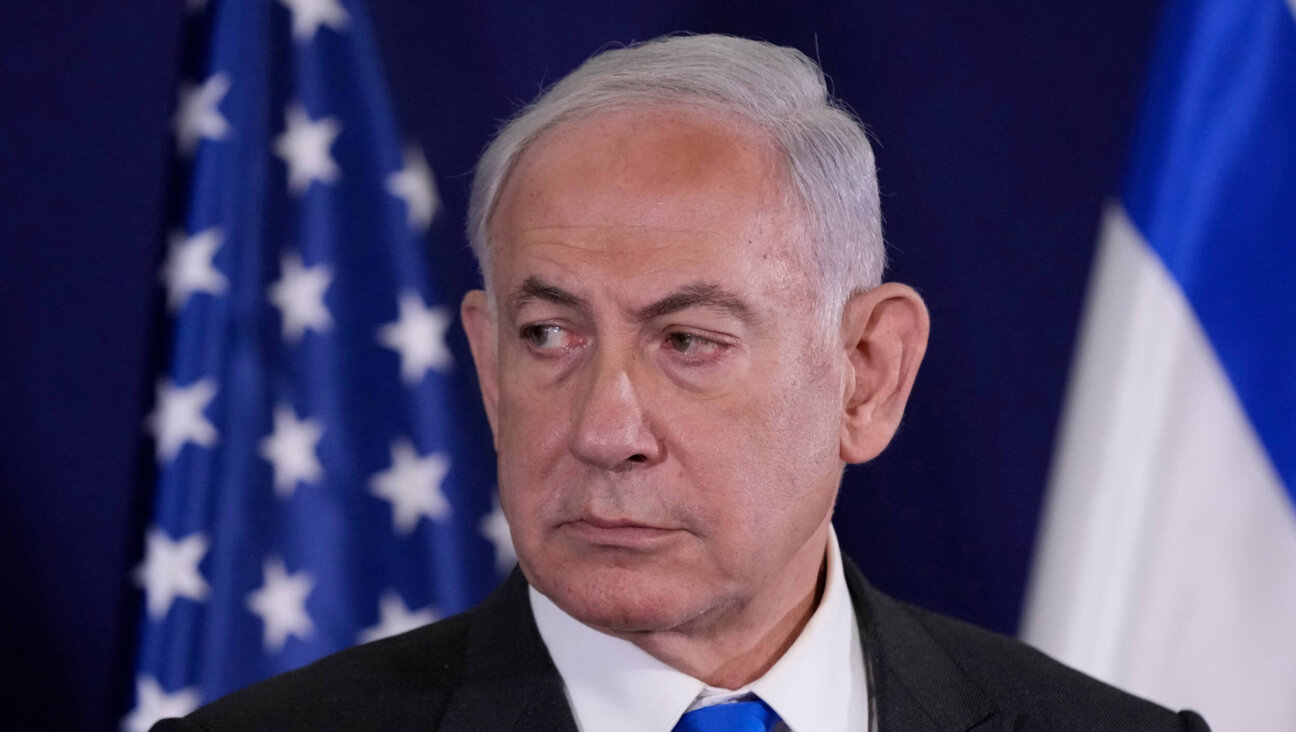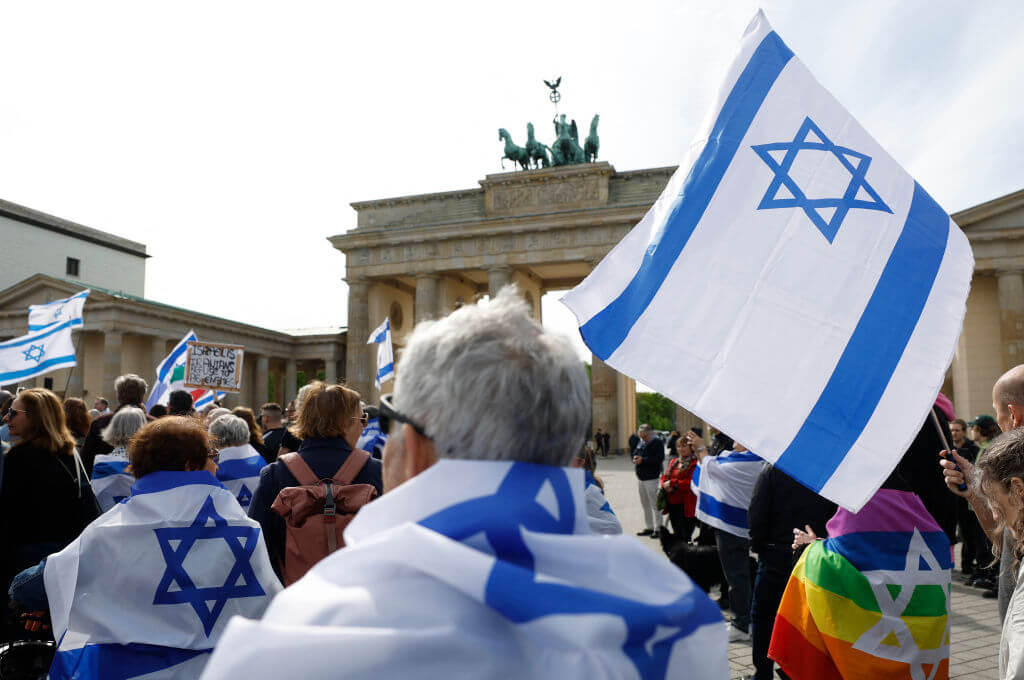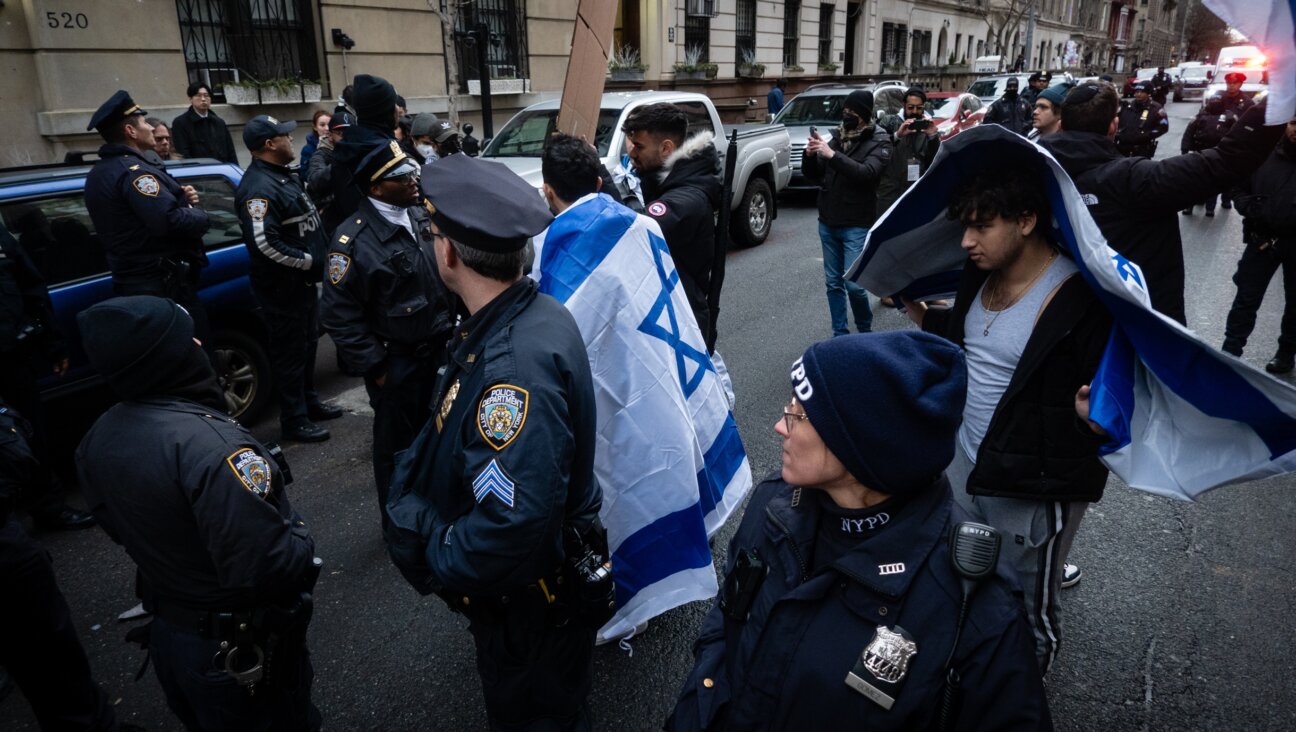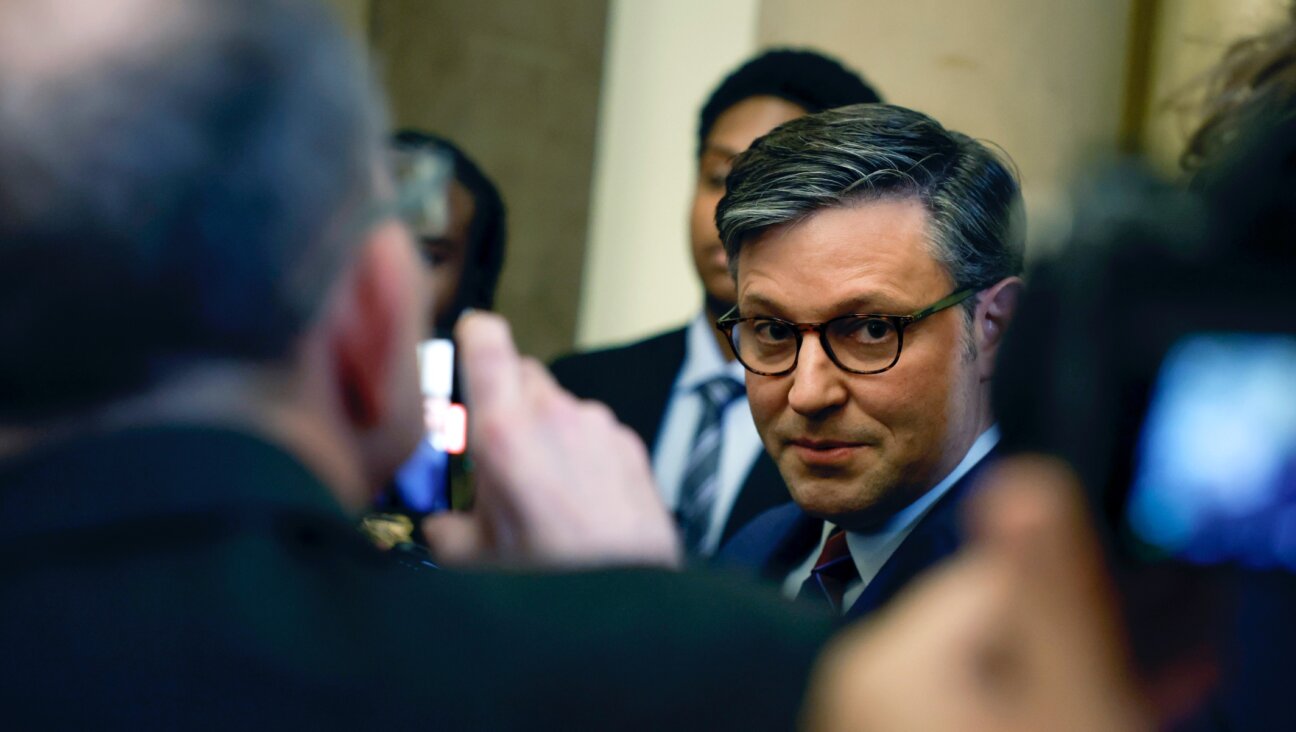What Was Once a Revolutionary Guard Is Now Just a Mafia
Back in October 1978, none of us in exile with Ayatollah Ruhollah Khomeini imagined that victory for the Islamic Revolution would be attained only a few months later. It was during those days in Neuf-le-Chateau that the notion of starting a “people’s army” first took hold, and expecting that our battle would be a long one, we took as models for our soon-to-be established army the forces in Algeria and Cuba.
But on February 1, 1979, we stepped off a plane from France into Tehran, and 10 days later we were in power. Suddenly we had a position to protect, and the model for our people’s army changed dramatically. It seemed more appropriate to emulate such forces as the Swiss Armed Forces, United States National Guard or Israel Defense Forces.
The thought was that if the Islamic Republic had two separate armies with independent command structures, the country could insulate itself against a coup. If ordinary citizens were given military training in preparation for combat, we believed, then any military commander would think twice before contemplating overthrowing the government.
In the three decades since, there has not been a coup. That people’s army, however, has grown into a multi-headed monster.
Today the Army of the Guardians of the Islamic Revolution — known in Farsi as the Sepah-e Pasdaran and in English as the Revolutionary Guard — is a mafia-like organization with a corrupting influence on Iran’s army, police, media, industries, judiciary and government. It is imperative that every effort now be made to contain the Revolutionary Guard’s powers, because its political and economic adventurism will ultimately lead to a serious crisis, not just in Iran but also across the Middle East.
Any attempt at rolling back the Revolutionary Guard’s power must begin with an understanding of how it has strayed from its original mission.
In the first phase of planning, we envisioned three separate circles on the organizational chart. The first consisted of a small but varied cadre of at most 500 people who were to be permanently employed by the Revolutionary Guard. All command and staff positions, including all the trained personnel destined for senior command in guerilla warfare, were to come from this quarter.
The second circle was to consist of another group of around 500,000 people who were to be recruited on a volunteer or part-time basis from the general public, with a designated mission to serve as commanders of “civilian guerilla groups.” The third and final circle would encompass as many people as possible from all walks of life — students, workers, bureaucrats, farmers and the like. It was envisioned that each volunteer would receive military training and subsequently be invited to participate in at least one prearranged military exercise each year.
Although computers were not commonly used in those days, we nonetheless intended to make full use of computerized programming for the promotion of the new organization, under the direct supervision of one of the personnel working for me. The light weapons held in the various armories were to be re-registered and distributed around the country. In case of an emergency, our thinking went, a simple volunteer from anywhere in the land could serve under the command of a part-time, fully trained group leader, who in turn would be part of a Revolutionary Guard division under the command of a full-time, fully trained commander with a mission to protect the country and the revolution.
As originally planned, the Revolutionary Guard was to be, quite literally, a people’s army — not, as it has become, a force separate from the general public, let alone opposed to it. In times of war, the Revolutionary Guard was seen as a force to fight alongside the regular military in the service of the country. In times of peace, it was to tend to its own affairs. In times of need or natural disasters, it was to help out with civil defense and other emergency operations.
After the original plans for the Revolutionary Guard had been drawn up and its constitution finalized in April 1979, I relinquished my post in the organization’s information and research unit to Ali Mohammad Besharati. I moved on to National Iranian Radio and Television, where after a short while I was appointed to head radio operations.
The years since have taken me on a far different path than the one on which I began the Islamic Revolution, but having been involved with the Revolutionary Guard at its birth, I have continuously followed its evolution. It is my view that over the course of the past 28 years, the Revolutionary Guard has deviated from its original mission in three important ways, in the process inflicting a series of irreparable damages to Iran.
The first deviation began when Mohsen Rezai, Mohammad Bagher Zolghadr and their ilk entered the Revolutionary Guard. Their first major task was to convert the Revolutionary Guard’s information and research unit — which had originally been designed to serve as an analysis and planning unit with, at most, some residual capacity for military intelligence gathering — into an outright security organization with Rezai at its helm.
It didn’t take long for this intelligence unit to expand its influence over the Revolutionary Guard’s other units. In May 1982, Iranian armed forces expelled the occupying Iraqi army from the ravaged southern city of Khorramshahr. Before the Iraqis captured the city in October 1980, it had been a major international port with a wealthy, cosmopolitan population, and the Revolutionary Guard’s part in recapturing Khorramshahr quickly gained mythic status in Iran. The intelligence unit’s control over the Revolutionary Guard became near total, and it embarked on a mission to convert the Revolutionary Guard into a classic fighting machine.
After the battle for Khorramshahr, Iran held the upper hand over Iraq. But rather than pursue a cease-fire, these gentlemen — aided and abetted by then-parliament speaker Akbar Hashemi Rafsanjani — convinced Ayatollah Ruhollah Khomeini that it was essential for Iranian military forces to invade Iraqi territory and capture the port city of Basra. There is no doubt that responsibility and blame for the six-year extension of the Iran-Iraq War, which needlessly caused so much death and destruction for the Iranian people, rests firmly on the shoulders of the clique of Revolutionary Guard commanders around Rezai and Zolghadr.
These same elements in the Revolutionary Guard, who assumed senior military titles for themselves without having the slightest relevant qualifications, unashamedly planned a number of large-scale offensives after the victory at Khorramshahr. As a consequence of Operations Khaybar, Badr, Karbala 4, Karbala 5 and others, thousands and thousands of young Iranians needlessly suffered. Of the nearly 267,000 Iranian deaths and 500,000 casualties caused by the Iran-Iraq War, more than 90% occurred after Khorramshahr was recaptured and the invading Iraqis expelled from Iranian territory.
In 1985, the Revolutionary Guard was able to obtain Khomeini’s approval for developing air, ground and naval units, thereby acquiring all the properties of a classic military organization. Despite lacking the necessary training and education, the Revolutionary Guard began to rival the regular armed forces.
During the Iran-Iraq War, the Revolutionary Guard’s commander, Rezai, stated that the Revolutionary Guard must develop units specifically tasked with confronting opposition to the regime. I met shortly afterward with the head of Iran’s Judiciary Branch and asked him not to pursue Rezai’s plan. The only possible outcome from such an act, I warned, would be the creation of a force very much resembling the Nazi Brownshirts.
The head of the Judiciary Branch laughingly disregarded my suggestion. I should not bad-mouth the Nazis, he told me; at least they had some educated people among them. In the end, Rezai had his way, and so were created the “White Shirts” and other civilian groups entrusted with the task of intimidating and brutalizing any hint of opposition, a practice that still takes place today.
The Revolutionary Guard was no longer a people’s army, just another coercive force at the service of the ruling establishment. To solidify their hold on power, the same clique that has been running the Revolutionary Guard all these years prematurely removed a number of senior and able commanders, among them Davoud Karimi, the commander in Tehran.
The Revolutionary Guard also expanded beyond the air, ground and naval components approved by Khomeini in 1985. The Basij force, which had been created as a volunteer militia to help fight the war with Iraq, was transformed into a unit with paid elements who were tasked with confronting domestic opposition. And in order to carry out the Revolutionary Guard’s bidding in areas outside the country — Lebanon, Palestine, Yemen, Egypt, Sudan and, most importantly, Iraq — the Quds Force was created.
I once heard Hassan Abbasi, who was a member of the Revolutionary Guard’s strategic planning department, boast to students at Khajeh Nasir University that the Revolutionary Guard was making good use of the Hezbollah cells it had created in Lebanon and elsewhere. And the current president of the Islamic Republic, Mahmoud Ahmadinejad, served with the Ramazan Unit of the Quds Force, participating in Iraq-related operations during the during the Iran-Iraq War. There should be no doubt about the Quds Force’s role in what transpired last summer in Lebanon, or in what is happening on a daily basis between Shias and Sunnis in Iraq.
The Revolutionary Guard also set up a new secret intelligence unit under the auspices of the Judiciary Branch’s security section. In effect a parallel security organization, it operates under the direct supervision of the supreme leader.
The most notorious part of this secret intelligence organization is Prison 325, which the unit runs independently in Evin Prison. I, like other opposition elements, was imprisoned there.
The Revolutionary Guard’s second major deviation from its original mission took place over the course of Rafsanjani’s eight-year presidency. After becoming president in 1989, he made it a priority for all government agencies to increase their revenues. He incorporated into his plans the Revolutionary Guard and the Ministry of Information. These two organizations, armed with weapons and handcuffs, soon entered the world of business — and became an entity replicated in other parts of the world only by mafia-like gangs of criminals.
In the former Soviet Union the KGB occupied a similar position, and as a result, post-Soviet society is plagued by the Russian mafia, one of the world’s deadliest criminal organizations. To this day, these elements have a stranglehold on some of Russia’s key economic enterprises, which has allowed them to weigh in heavily on the general direction of the country’s politics.
In Iran as much as in Russia, when elements armed with weapons enter into commercial activities, two immediate and major threats are created. The first is that economic rivals are soon arrested or intimidated, and with rivals out of the equation, a commercial monopoly is inevitably established. Second, the armed economic unit, in an attempt to increase its easy profits, uses its power of intimidation and force to enter into a number of illegal activities, such as drug and alcohol smuggling and prostitution. Because of their weapons, no one dares challenge or criticize these elements’ behavior.
After Mohammad Khatami assumed the presidency in 1997, serious attempts were made to extricate Iran’s intelligence community from the world of conventional economic activities. Intelligence Minister Ali Younesi himself insisted on the effort. By most accounts, some moderate progress was achieved, but a number of people remain skeptical about the sincerity with which the effort was pursued.
However, as regards the Revolutionary Guard — which still operates under the direct supervision of the supreme leader — no such steps were ever initiated. Indeed, its involvement in commercial activities has only grown.
Today the Revolutionary Guard controls more than 100 different economic enterprises, conducting business under the aegis of either itself or the Basij. Its commercial activities have ranged from importing household goods — at a time when other commercial enterprises were banned from importing some of those goods — to being in charge of car manufacturing companies and assembly plants.
The Revolutionary Guard has also been a major contractor in the construction of oil and gas pipelines, as well as in the importing of Kazakh oil into Iran. And when Iraq was under international sanction by the United Nations Security Council, the Revolutionary Guard was the prime force behind Iranian efforts to help Saddam Hussein and his family smuggle oil out of Iraq, according to personal acquaintances of mine who were involved in the operations.
Some Revolutionary Guard commanders are directly involved in economic activities aimed at enriching themselves. One case in point is Sadegh Mahsouli. Formerly the Revolutionary Guard commander of Azerbaijan province in northwest Iran, he was nominated by Ahmadinejad to the powerful post of oil minister, and would be serving today had the parliament not rejected his nomination.
And since Ahmadinejad moved into the president’s office, contracts for oil pipelines worth more than $7 billion have reportedly been awarded to Revolutionary Guard-affiliated enterprises without any public tenders, at a time when numerous contractors with far more experience and qualifications in their respective fields are struggling with serious financial problems.
Consequently, a government whose slogan and mission has been to fight financial corruption has inadvertently become what is undoubtedly the most corrupt government in the history of modern Iran.
The Revolutionary Guard’s third deviation from its original mission has taken place since Ali Khamenei became supreme leader of the Islamic Republic of Iran in 1989. By involving the Revolutionary Guard in the political life of the country, Khamenei’s direct and unwise leadership of the corps has simply exacerbated matters beyond imagination.
Before Khamenei assumed the mantle of leadership, ambitious Revolutionary Guard commanders who displayed an interest in entering into politics were severely reprimanded. Khomeini firmly believed that no military establishment should be allowed to involve itself in the political life of the nation.
Once Khamenei came into power, however, Khomeini’s restrictions were no longer adhered to, and political appointments of Revolutionary Guard members became quite regular. At the height of the reform movement under President Mohammad Khatami, Khamenei was instrumental in allowing a number of key Revolutionary Guard and Basij members to enter into politics.
The appointments were part of a strategy aimed at safeguarding Khamenei’s own position of power, which was threatened by a clear absence of popular support. When the media publicly questioned the lethal mix of military and politics under Khamenei, the reaction was quick and venomous — and I speak from personal experience.
In 1999, the commander of the Revolutionary Guard, Rahim Safavi, gave a public speech in which he attacked Jame-e, a reform-minded newspaper I co-founded, and warned of “snakes and scorpions rising from the cracks of Iran’s journalistic society.” The solution he proposed — no doubt with the blessing of the supreme leader — was to “cut off heads and tongues” in order to silence any form of free and open discussion that did not suit the purposes of Khamenei and his cronies.
I responded to his comments by publishing a short article in Jame-e. I wrote that I did not recall Safavi being one of the Revolutionary Guard’s founding members. I also wrote that when we created the Revolutionary Guard, we never envisioned it as a force standing against the ordinary people of Iran or in opposition to freedom of expression.
Immediately after the article was published, I was contacted by the supreme leader’s office and reprimanded for having written that I could not recall Safavi’s background with the Revolutionary Guard dating back to the corps’ founding.
Sometime afterward, Safavi made a political speech during the annual commemoration of the occupation of the American embassy in Tehran. I once again responded, this time in a radio interview. I stated that neither Safavi nor any other military commander had the right to comment on political matters, and that they must leave political matters entirely in the hands of the country’s civilian leadership. I also stated that if Safavi and any other military commanders nourished political ambitions, they were more than free to pursue them, but only once they had resigned their commissions and opted for civilian life.
In 2003, I was arrested and imprisoned by the secret intelligence unit run by the Revolutionary Guard under the supreme leader’s direct supervision. My radio comments about Safavi were among the six serious charges brought against me. My crime had been to insult a revolutionary organization, a crime punishable by imprisonment.
My experience was far from unique. Anyone seen as a competitor — political, commercial or otherwise — runs the risk of being put out of commission by intimidation and brute force. As a direct result, a number of Revolutionary Guard commanders have risen to key positions of power in Iran, despite being clearly unqualified.
Under their leadership, the Revolutionary Guard has extended its reach across Iranian society. Militarily and politically, it has carved out a role for itself not unlike that of the Red Army and the Communist Party in the Soviet Union. It has transformed itself, KGB-like, into a mafia that dominates Iran’s police force. And in its business activities, it now resembles some of the world’s major cartels.
And the Revolutionary Guard’s ambitions continue to grow. In order to sideline potential rivals, the Revolutionary Guard has been instrumental in inciting division between some of the country’s key agencies, such as the Supreme National Security Council and the Ministry of the Interior. With the backing of Khamenei, Revolutionary Guard commanders have done their very best to expand their influence over the legislative and judicial branches of government. And they have made every effort to consolidate support for their cronies in the Ministry of Foreign Affairs and in Iran’s radio and television networks.
Left unchecked, the Revolutionary Guard’s political and economic adventurism will inevitably lead to a serious crisis. The people of Iran will suffer the most, but so, too, will others in the Middle East. Last summer’s hostage-takings in Lebanon and Palestine, which culminated in the horrific 34-day war between Israel and Hezbollah, are only small examples of the kind of scenarios we are likely to face.
It is therefore imperative that the Iranian people, with the help of the international community, seriously attempt to roll back the powers of this growing monster. Unless the Revolutionary Guard is contained, it may soon face a groundswell of opposition — from within its own ranks, from others associated with the regime and, perhaps most importantly, from ordinary Iranian citizens. Unless the Revolutionary Guard curbs its incompetent and illegal involvement in the political and economic life of Iran, the rising tide of unrest is bound to reach a very dangerous climax.
Mohsen Sazegara co-founded the Iranian Revolutionary Guard Corps in 1979, and served the Islamic Republic until 1989 in a number of senior government positions, including deputy prime minister for political affairs and managing director of the National Radio of Iran. He went into exile after being imprisoned in 2003, and is currently a visiting researcher at Harvard University.

I hope you appreciated this article. Before you go, I’d like to ask you to please support the Forward’s award-winning journalism this Passover.
In this age of misinformation, our work is needed like never before. We report on the news that matters most to American Jews, driven by truth, not ideology.
At a time when newsrooms are closing or cutting back, the Forward has removed its paywall. That means for the first time in our 126-year history, Forward journalism is free to everyone, everywhere. With an ongoing war, rising antisemitism, and a flood of disinformation that may affect the upcoming election, we believe that free and open access to Jewish journalism is imperative.
Readers like you make it all possible. Right now, we’re in the middle of our Passover Pledge Drive and we need 500 people to step up and make a gift to sustain our trustworthy, independent journalism.
Make a gift of any size and become a Forward member today. You’ll support our mission to tell the American Jewish story fully and fairly.
— Rachel Fishman Feddersen, Publisher and CEO
Join our mission to tell the Jewish story fully and fairly.
Our Goal: 500 gifts during our Passover Pledge Drive!
























